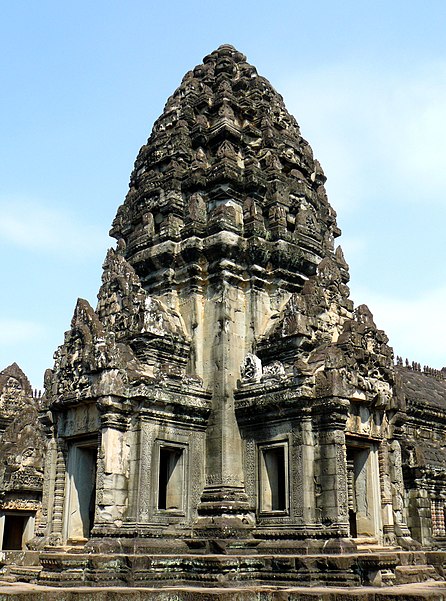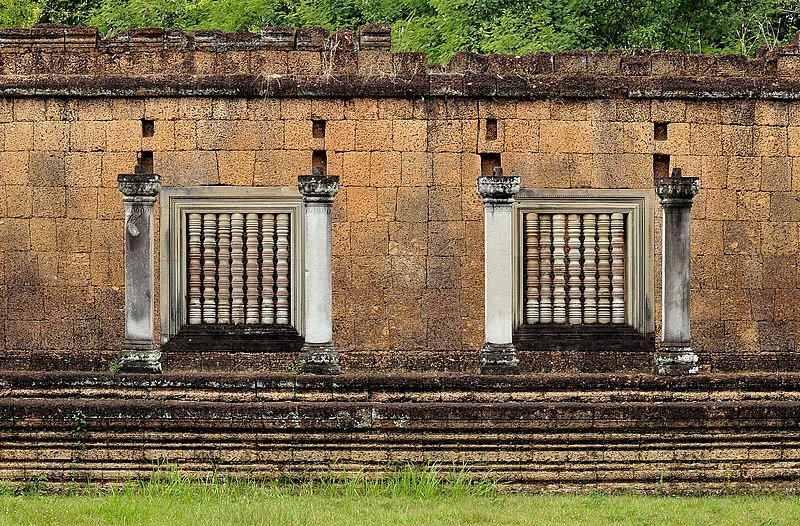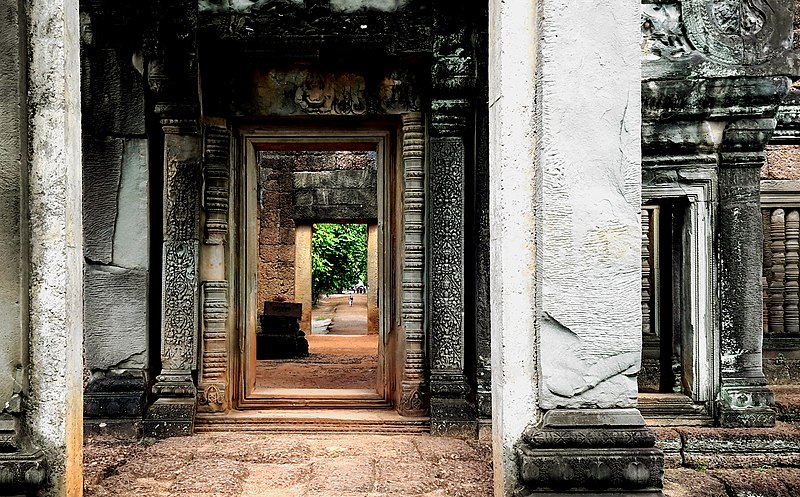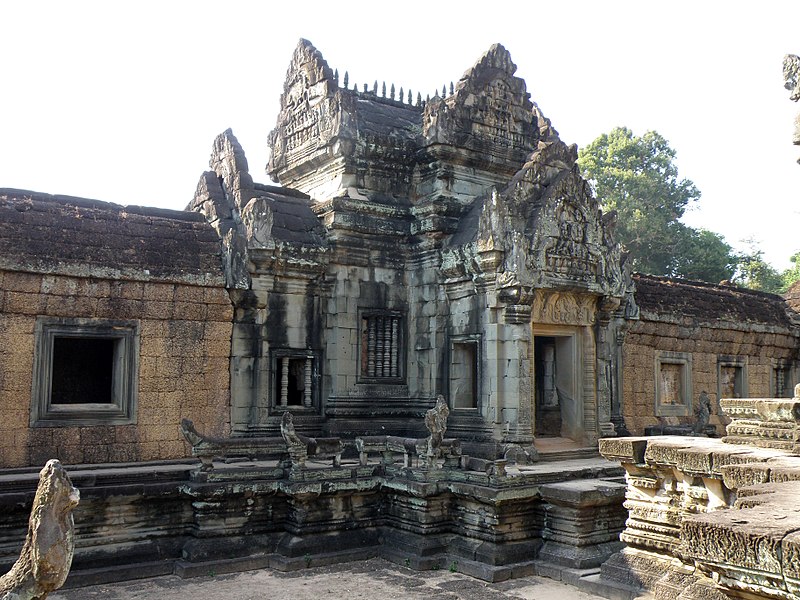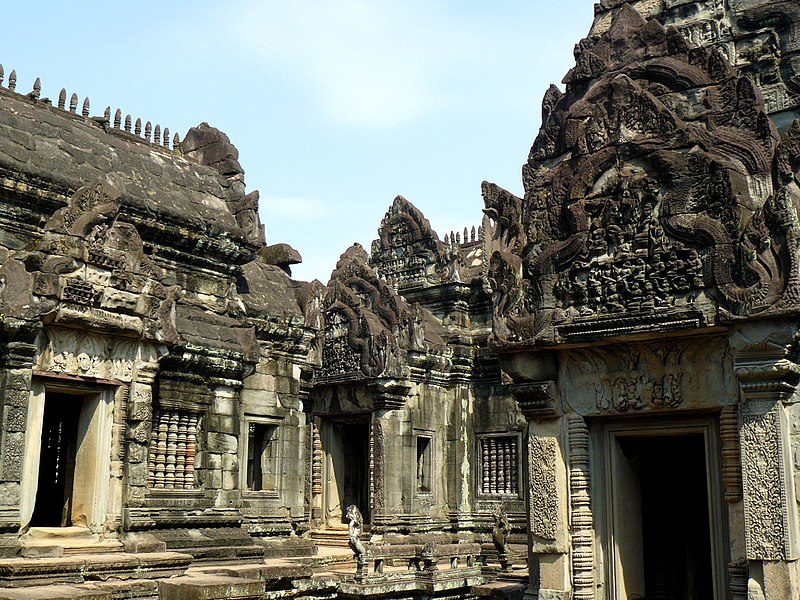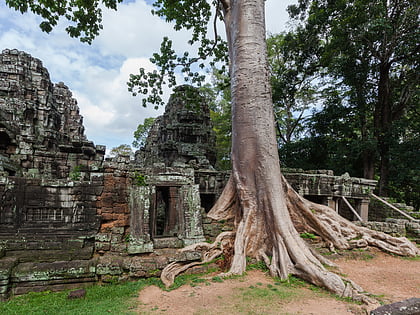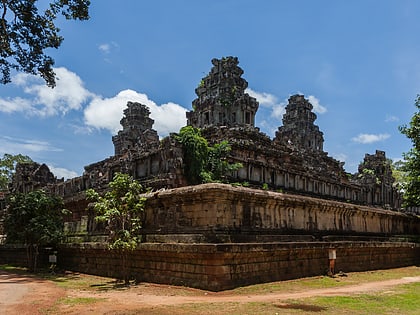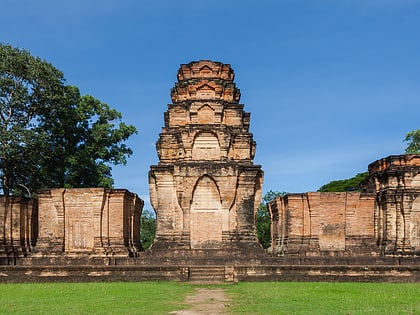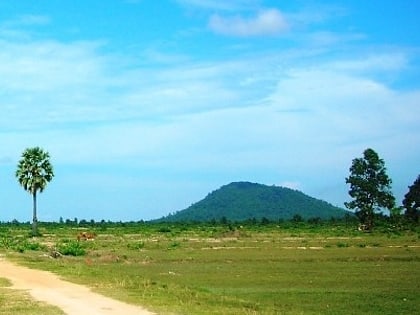Banteay Samré, Siem Reap
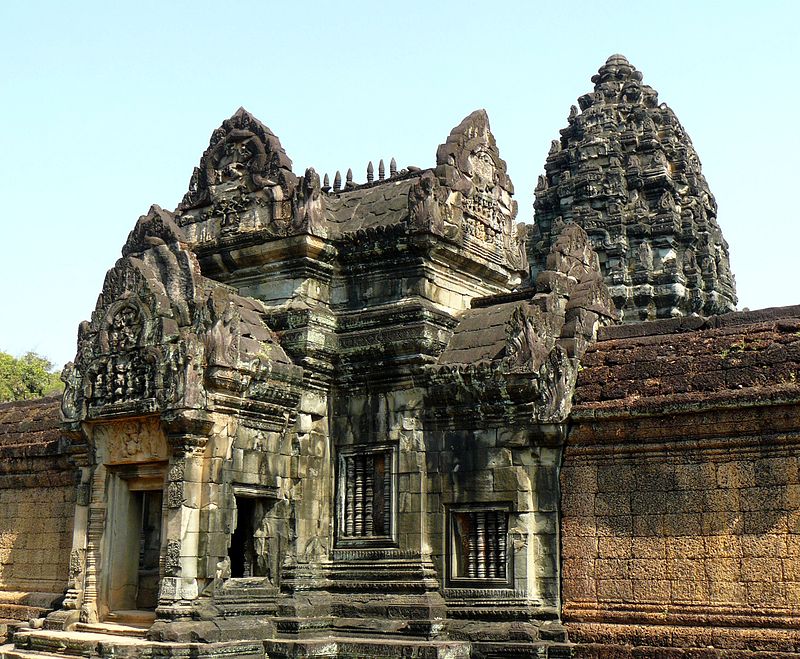
Facts and practical information
Nestled within the verdant landscapes of Siem Reap, Cambodia, Banteay Samré stands as a testament to the architectural prowess of the ancient Khmer Empire. This lesser-known, yet no less captivating temple, exudes an aura of tranquility and timelessness, inviting visitors to step back into a bygone era of grandeur and devotion.
Constructed in the mid-12th century during the reign of King Suryavarman II, Banteay Samré is a Hindu temple dedicated to the god Vishnu. Its name, which translates to "The Citadel of the Samré," is derived from the now-assimilated ethnic group that once inhabited the region. The temple showcases the classic style of the same period as the iconic Angkor Wat, with which it shares many architectural similarities.
Banteay Samré is characterized by its intricate carvings and well-preserved bas-reliefs, which adorn the inner sanctum walls, depicting Hindu mythologies and the pantheon of gods. The temple's layout is a harmonious blend of symmetry and proportion, featuring a single tower at its core, encircled by laterite and sandstone walls. The central sanctuary is accessible through a series of elevated platforms and naga-guarded stairways, leading visitors into the heart of this serene sanctuary.
The temple complex is surrounded by a broad, now-dry moat, which would have once mirrored the celestial abode of the gods, further enhancing the sanctity of the site. Despite being off the beaten track compared to its famous neighbor, Angkor Wat, Banteay Samré offers a more intimate and contemplative experience for those who seek to delve into Cambodia's rich cultural heritage.
Banteay Samré – popular in the area (distance from the attraction)
Nearby attractions include: Ta Prohm, Banteay Kdei, Neak Pean, Pre Rup.


